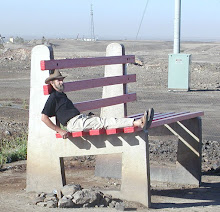Thursday, 23 September 2021
It is hard to say why some cases attract media attention and others do not
The number of missing people does not seem to discriminate on Race. The latest data from the FBI shows there were more than 600,000 people reported missing in 2018 in the U.S., and 40% of those people were people of colour. That’s about their percentage in the US population. In 2020, the NCIC reported 543,018 missing people and 41% were people of colour.
What determines what is a nationwide story is complex, but I admit it is usually a white woman. The FBI has a file of 2021 unsolved kidnapping (https://www.fbi.gov/wanted/kidnap) but none of these cases got the attention that Gabreille Petito did. Only one of the 9 was black. One case was Asian, one Amerindian, two Hispanics and four Whites.
It seems there is a competition on who gets less coverage: Asians, Amerindians, Hispanics or Blacks.. Why did Lauren Cho, a 30-year-old Asian woman who went missing in California on June 28, not go nationwide? Dawnita Wilherson, a black woman, went missing in July 2020, but no nationwide coverage. Khadijah Rose Britton, an Amerindian, woman disappeared in November of 2018 and the FBI is offering $10,000 for information, why didn't that go nation-wide?
Perhaps it was their participation in social media: none has the prolific presence of Petito. Maybe black women who disappear do not have such a profile on social media?
Sabina Nessa: Man, 38, arrested on suspicion of murder as police issue CCTV appeal
Here was a woman whose murder went national in the UK but did not seem to be a white woman.
The number of missing people does not seem to discriminate on Race. The latest data from the FBI shows there were more than 600,000 people reported missing in 2018 in the U.S., and 40% of those people were people of colour. That’s about their percentage in the US population. In 2020, the NCIC reported 543,018 missing people and 41% were people of colour.
What determines what is a nationwide story is complex, but I admit it is usually a white woman. The FBI has a file of 2021 unsolved kidnapping (https://www.fbi.gov/wanted/kidnap) but none of these cases got the attention that Gabreille Petito did. Only one of the 9 was black. One case was Asian, one Amerindian, two Hispanics and four Whites.
It seems there is a competition on who gets less coverage: Asians, Amerindians, Hispanics or Blacks.. Why did Lauren Cho, a 30-year-old Asian woman who went missing in California on June 28, not go nationwide? Dawnita Wilherson, a black woman, went missing in July 2020, but no nationwide coverage. Khadijah Rose Britton, an Amerindian, woman disappeared in November of 2018 and the FBI is offering $10,000 for information, why didn't that go nation-wide?
Perhaps it was their participation in social media: none has the prolific presence of Petito. Maybe black women who disappear do not have such a profile on social media?
Sabina Nessa: Man, 38, arrested on suspicion of murder as police issue CCTV appeal
Here was a woman whose murder went national in the UK but did not seem to be a white woman.
Subscribe to Comments [Atom]

Post a Comment